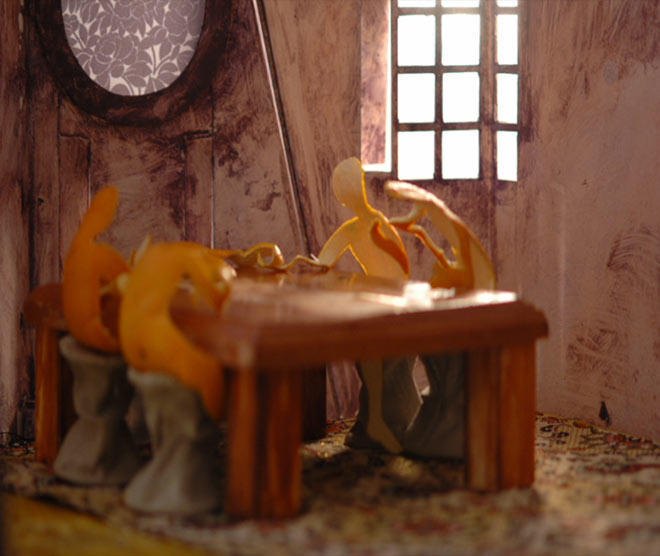
New York
Laleh Khorramian
Salon 94
May 29-July 30, 2008
Laleh Khorramian opens her spring show at Salon 94 Freemans with a new stopmotion animation work. Figures fashioned from dried orange peels engage in erotic, occasionally comic interactions. Caught somewhere between breathing and decaying, the oranges are an allegory for human existence — love, loss — and its impermanence. Calling out to the passerby voyeur, Khorramian will have a window built in the gallery’s new Lower East Side space, which will show remnants, including sculpture and drawing, from the video’s production. Here is a thoughtful work from the New York–based artist and a departure from her phantasmagoric canvases, which are often meditations on the medium of painting itself. This latest project is at once universal and compellingly personal.
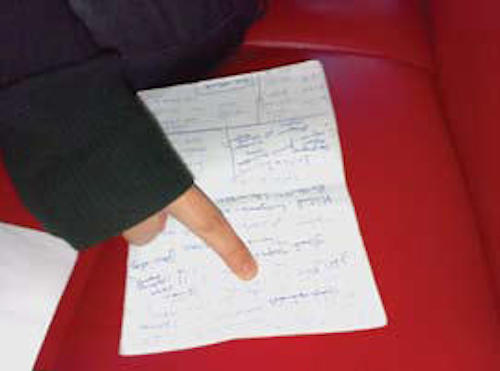
Beirut
Home Works Forum IV: A Forum On Cultural Practices
April 12-19, 2008
Beirut’s Home Works Forum launches its fourth installment this spring. Organized by Ashkal Alwan, the forum is a formidable multidisciplinary event that brings together artists, writers, and intellectuals for seven days of lectures, panel discussions, screenings, debates, and exhibits in venues throughout Beirut. This fourth edition takes as its “thematic axes” disaster, catastrophe, and the recomposition of desire. Highlights include a film series on sex curated by Akram Zaatari; visual works by Emily Jacir, Khalil Rabah, Lina Saneh, Ziad Antar, Zeina Maasri, and Kamal al Jafari; and presentations by Bernard Khoury (on catastrophic spaces) and Tony Chakar (on the reconstruction of the Beirut suburbs). Other participants include Michael Rakowitz, Bahman Jalali, Rana Javadi, Leila Shahid, and Elias Sanbar. Najwan Darwish will deliver a presentation on Israeli sexual identity in Arab eyes, and a panel on suicide bombing will bring together Wissam Saadeh, Hazem Saghiyeh, Bachar Haydar, Houssam Itani, and Hasem El Amin. Finally, Jérôme Bel and Faleh Abdul Jabbar will converse with Iyad Jamal Al-Din on religious symbolism in the Iraq conflict.
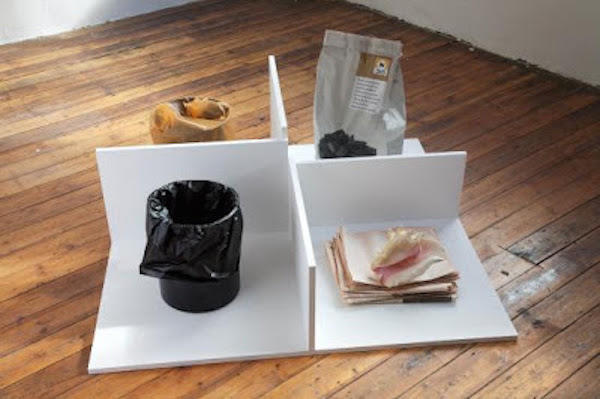
Berlin
5th Berlin Biennial for Contemporary Art
April 5–June 15, 2008
Curated by Adam Szymczyk and Elen Filipovic, ‘When things cast no shadow’ is said to be structured as five movements without a plot. During the day, new works — including over fifty commissioned especially for Berlin — will be on view at three main venues, each of historical significance to this most historically fraught of cities. Major installations don’t shy away from engaging, playfully and provocatively, with the stubborn past.
At Mies van der Rohe’s high-modernist Neue Nationalgalerie, Gabriel Kuri offers a participatory sculpture that reorders the building’s service operations; on the terrace of the same museum, Cyprien Gaillard installs an unpretentious public sculpture from a Paris housing project next to masterpieces by Henry Moore and Alexander Calder. The KW Institute for Contemporary Art, located in a decommissioned margarine factory, hosts similarly confrontational new work, including a meditation on state power by Ahmet Ögüt. The third venue speaks for itself: Skulpturenpark Berlin zentrum, an urban void on a site once occupied by the Berlin Wall. Come dusk, the exhibition continues throughout Berlin, with sixtythree diverse nighttime events planned over the course of the biennial.
The last Berlin biennial, ‘Of Mice and Men,’ was a copiously praised affair. Conceived by the renegade curatorial triumvirate of Maurizio Cattelan, Massimiliano Giani, and Ali Subotnick, 2006’s event took place along East Berlin’s storied Auguststrasse, occupying spaces ranging from private apartments to a mirrored ballroom to a former Jewish school for girls. That show was equal parts smart, evocative, and moving; it went a long way toward cementing Berlin’s place among more established art cities (and biennials). Needless to say, Szymczyk and Filipovic have formidable shoes to fill.
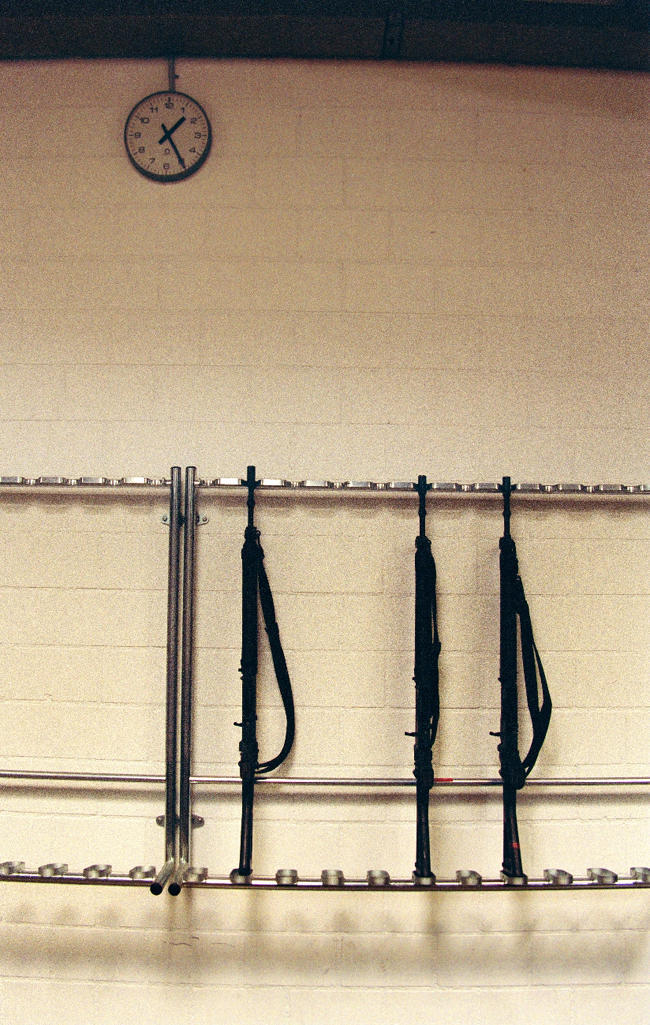
Paris
Les Inquièts: Five Artists Under the Pressure of War
Centre Georges Pompidou
February 13–May 19, 2008
Borrowing its title from the Polish Israeli Leo Lipski’s novel about artists on the eve of World War II, this exhibition explores the fragility of cultural production through five contemporary Middle Eastern artists. Yael Bartana presents her 2004 work Low Relief, a four-channel video projection installed to resemble an architectural but mobile frieze of men marching in military formation. Omer Fast’s Casting (2007) considers the perspective of a viewer faced with war as televised spectacle. Rabih Mroué shows his video work Three Posters (2000), in which he ponders the possibility of representing a martyr’s suicide death. Ahlam Shibli presents a photographic series shot at the village of Al-Shibli. And Akram Zaatari offers a new film that consists of a single long shot of a Lebanese resistance fighter slowly and meticulously retrieving, cleaning, and finally donning his military uniform. The show’s guiding presumptions may be loaded, or dangerously vague — must the equation always be Middle East equals War? — but the work included resists pat conclusions.
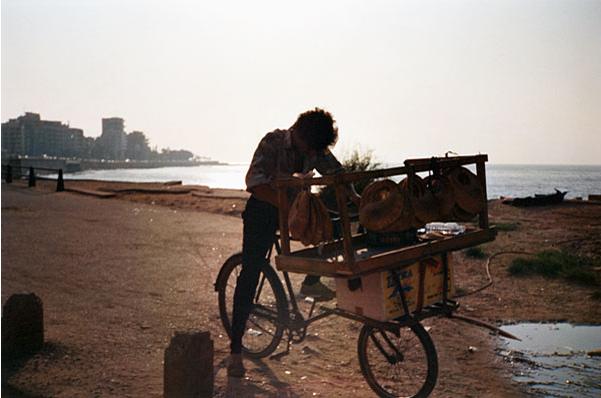
Amman
Art Now in Lebanon
Darat al Funun
March 4–May 29, 2008
Gallerist Andrée Sfeir-Semler presents ‘Art Now in Lebanon,’ which features shows by fourteen artists, a month of short films, sundry talks (including one by Bidoun contributor Kaelen WilsonGoldie on critical practice in contemporary Beirut), a performance of Make Me Stop Smoking by Rabih Mroué, and a lecture by Jalal Toufic titled “The Withdrawal of Tradition Past a Surpassing Disaster.” The scope is indeed as wide as it sounds; the exhibition culls from the portfolios of Akram zaatari, Toufic, Joana Hadjithomas and Khalil Joreige, Marwan Rechmaoui, Mazen Kerbaj, Paola Yacoub, Mroué, Rayanne Tabet, Randa Mirza, Walid Raad, Walid Sadek, and Ziad Antar.
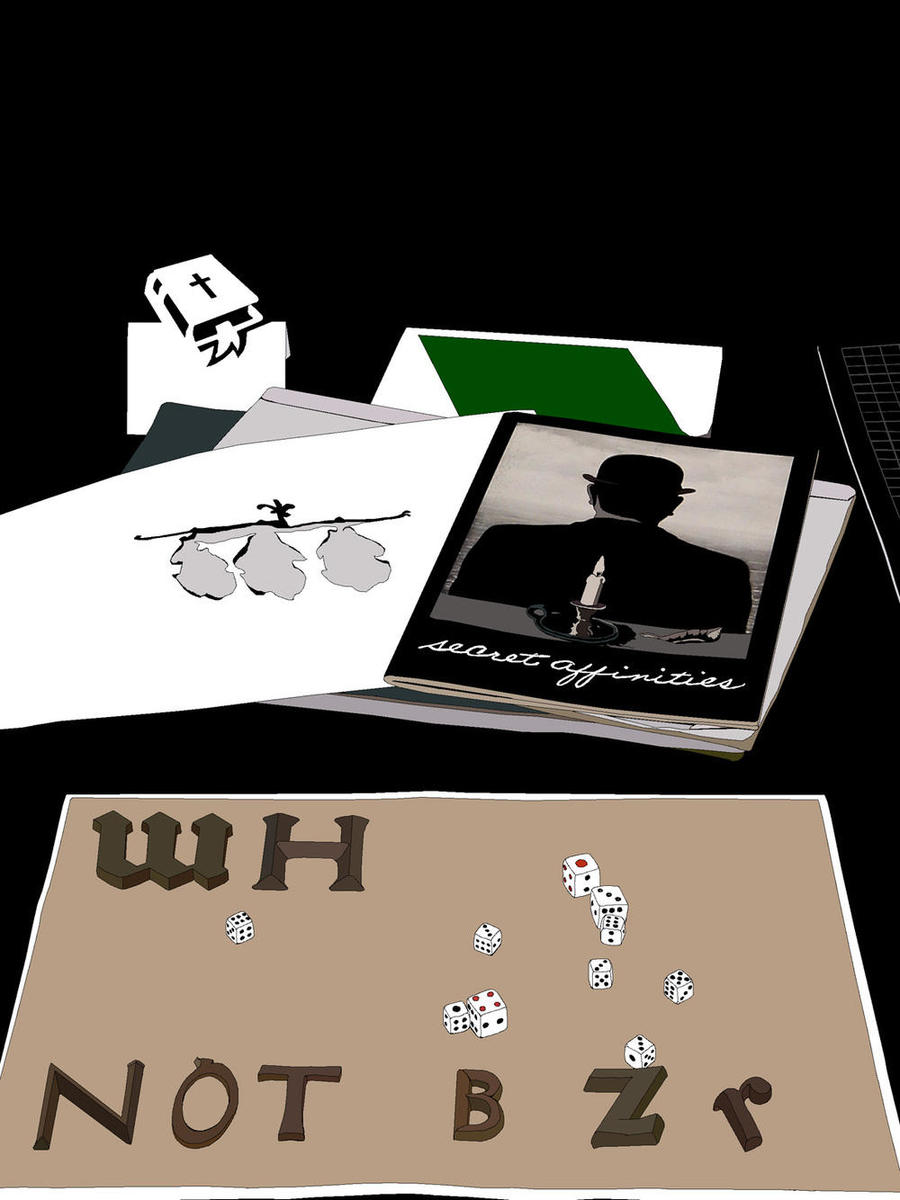
Santa Barbara
Setareh Shahbazi
The Santa Barbara Contemporary Arts Forum
March 1–May 11, 2008
Curated by Regine Basha, Berlin-based Setareh Shahbazi’s exhibition ‘Why Not Bazar’ examines intersections and collisions between assorted locations of culture and their respective traditions. Shahbazi works with and through images gathered from her daily life. Materials culled from magazines, newspapers, postcards, billboards, and advertisements, as well as some pictures taken by the artist on location, create the basis for these twoand three-dimensional collages. Shabazi has often traveled between Western Europe and the Middle East, and her collection melds scenes from ordinarily disparate cultures, though her treatment of these transitions is anything but binary.
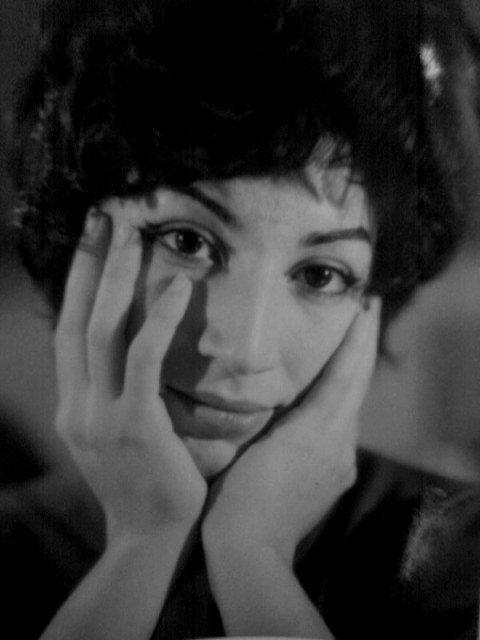
Manchester
Forugh Farrokhzad (1935—1967): Forty-Year Anniversary Conference
University of Manchester
July 4-5, 2008
Convened four decades after the untimely death of one of twentieth-century Iran’s most influential women poets, this international conference will gather scholars from Europe, North America, and Iran to explore Forugh Farrokhzad’s literary and broader cultural impact, both during her lifetime and in the forty-odd years since her passing. The event is organized by the Iran Heritage Foundation and the University of Manchester.
Sharjah
Sharjah Biennial: Production Program
The Sharjah Biennial breaks the stop – start biennial mold with the launch of a production program aimed at facilitating new work between now and the next edition (scheduled for March 2009, to coincide with Art Dubai). The criteria are wide open: artists can produce work anywhere (though they can make use of Sharjah’s residency program, if it relates to the UAE) and the finished work may or may not be included in, or purchased by, the biennial. Artists are invited to submit proposals to the biennial committee: upcoming deadlines fall on June 10 and September 10, 2008, and application forms can be downloaded from the biennial’s website.
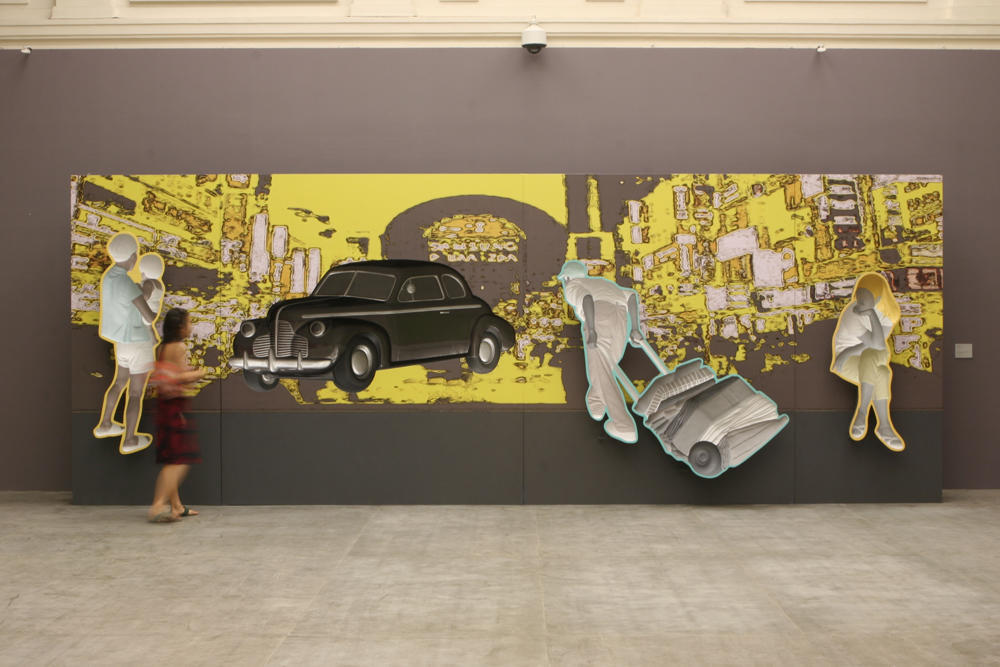
Dubai
Art Dubai: The Art Park
Madinat Jumeirah
March 19-22, 2008
In the space of a year since its inaugural outing, Art Dubai (formerly the Gulf Art Fair) has sprouted the accessories of an established fair — an array of projects, a satellite fair. By 2009, it’s sure to be known as Dubai Art Week, with the Sharjah Biennial — and possibly auctions — joining the fray.
Art Dubai 2008 features installations and video projects by Tarek Zaki, Muhammad Zeeshan, Sunil Gawde, Amir Fallah, and Marwan Rechamoui. Several of these are presented in the Art Park, a new area of the fair devoted to video and installation projects, located in an underground car park. Bidoun’s contribution, an Artists’ Cinema and “video bar,” will screen programs curated by Bidoun (“Heysa!”) and guest curators Nav Haq (“Oracle of the Constitution”) and Tirdad Zolghadr (“Thanks for Sharing: Films for an Art Fair”).
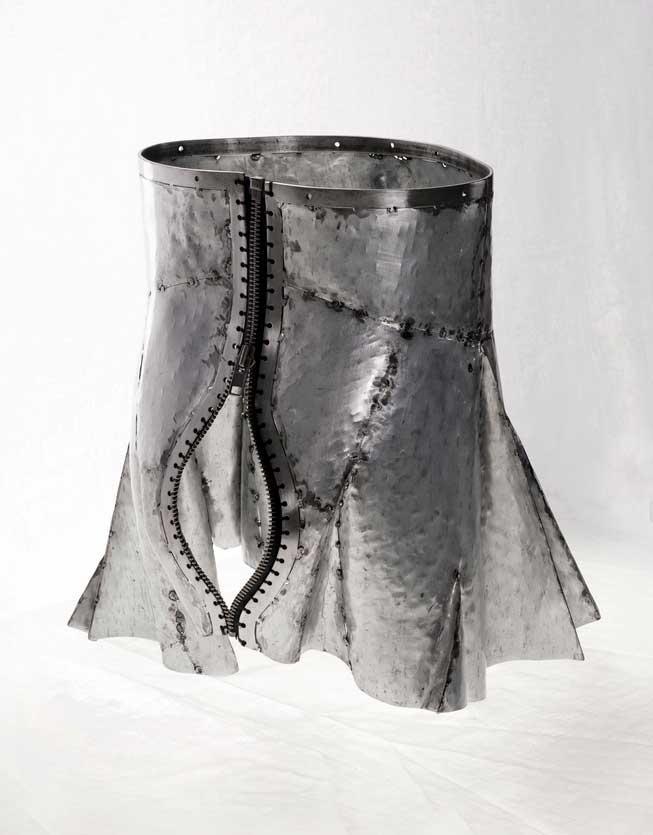
Dubai
Art Dubai: Desperately Seeking Paradise
Madinat Jumeirah
March 19-22, 2008
Art Dubai has also scheduled a curated exhibition alongside the seventy-odd galleries plying their wares. ‘Desperately Seeking Paradise’ showcases the work of eleven Pakistan-based artists. While grouped, vexedly, by geography and shared histories, the work “bristles with intrinsic dissimilarities,” according to curator Salima Hashmi.
Besides the armored corsets of Naiza Khan, Mohammed Talpur’s mechanical drawings, documentation of Durriya Qazi’s Witness, and clay sculptures of war-slain figures decaying — literally — with each passing day, ‘Desperately Seeking Paradise’ includes America Lahore, a site-specific work from Sophie Ernst that runs video interviews with young men looking to emigrate to America, projected onto piles of cardboard boxes.
The exhibition’s title houses a biting double entendre: an associated community art project brings photography instruction to Dubai’s notoriously indentured manual laborers.
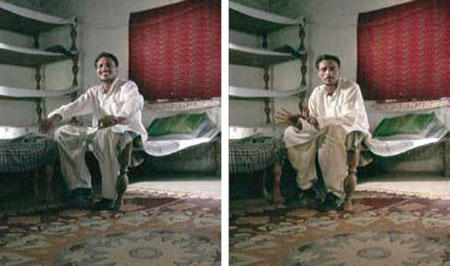
Dubai
Creek Contemporary Art Fair
XVA and Bastakiya
March 15-31, 2008
Bastakiya-bound gallery xVA launches the second annual Creek Contemporary Art Fair in March as a satellite event to Art Dubai — compatible, but more community-focused and a bit rougher around the edges. Exhibitions, film screenings, street parties, and talks take place in the alleyways and partially renovated houses that make up Dubai’s bijoux historic quarter.
The Third Line is collaborating with London’s Albion Gallery to show Avish Khebrehzadeh’s animations, projected over drawings and paintings. In a house next door, meanwhile, Bidoun Projects presents Emre Hüner’s Panoptikon (2005), the Istanbul-based rising star’s seminal film in which he animates elements from exquisite drawings of future–retro worlds.
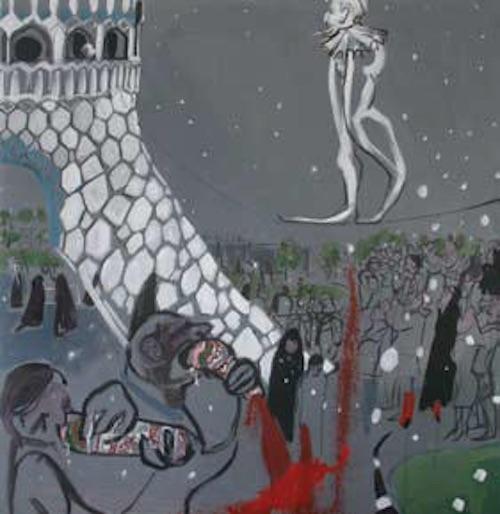
Dubai
Rokni Haerizadeh
B21 Gallery
March 16-April 10, 2008
Among the clutch of Tehran-based artists for whom Dubai is becoming a surrogate capital, young painter Rokni Haerizadeh is something of a star. His latest show marks a shift in direction from acrylics and watercolors to larger, bolder canvases painted in oils. He has also turned away from the Persian mythology and traditional literature that previously influenced his work to embrace contemporary poetry and take everyday public life in Tehran as a subject. A set of watercolors accompanying the major works includes one painting commissioned by Bidoun for October 2007’s PROJECTS issue.
Dubai
Cross Roads
Elementa Gallery
March 15-April 19, 2008
Hoping to draw local art devotees away from the packed industrial-cumgallery district of Al Quoz, newcomer Elementa has set up in a converted warehouse in Dubai’s Airport Free zone. The gallery plans an eclectic mix of shows, opening with an exhibit from a British-Canadian collective (including new work by Matt Calderwood), followed by shows with an emphasis on contemporary art from India and Pakistan. This last show groups stars such as Subodh Gupta and Rashid Rana with up-and-coming talent, from Naiza Khan, a sculptor, to Bani Abidi, whose videos and drawings reflect on the barriers — or “mobile architecture” — that spring up around foreign embassies.
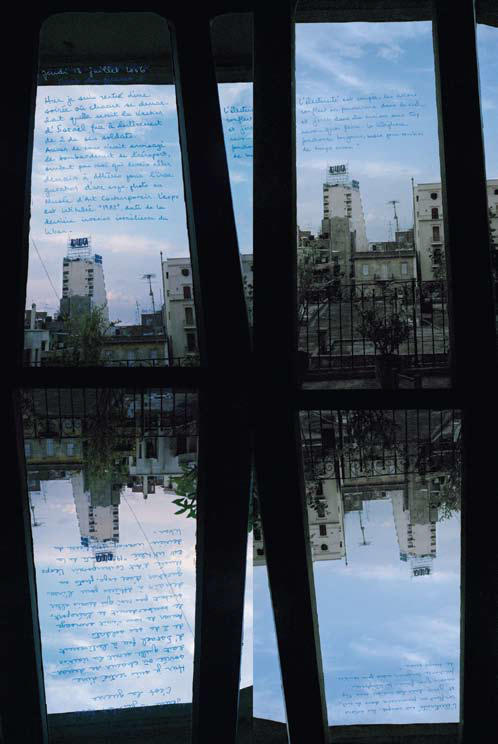
Dubai
Roads Were Open / Roads Were Closed: On How We Perceive Conflict
The Third Line
May 22-June 15, 2008
In a bid to locate the “pockets of non-information” that elude the daily news-grind, curator Haig Aivazian is assembling a boldly interdisciplinary show encompassing recent work by Tarek Al Ghoussein, Laila Shawa, Fouad Elkoury, and Sinan Antoon. Exploratory thematic exhibitions are still a rarity in the Gulf, and this inquiry into “the politics around the ways in which information is selected, compiled, circulated, and received” will prove highly refreshing. The show entails talks, performances, film screenings, and panel discussions with authors, filmmakers, and artists.
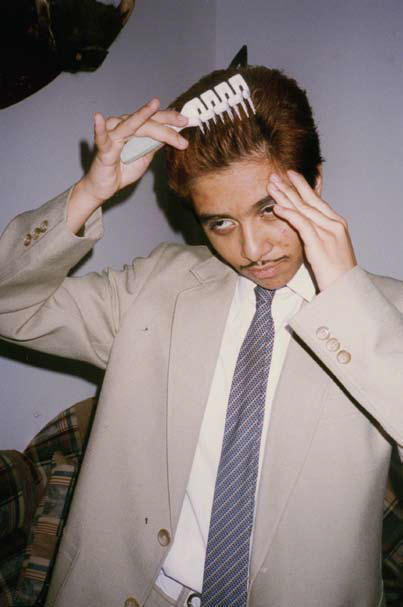
Kuwait
Ed Beiti, Aana Geezi (In My House, I’m A Cruiser)
Sultan Gallery
March 25-27, 2008
A group show curated by Fatima Al Qadiri and Khalid Al Gharaballi, ‘In My House, I’m a Cruiser’ probes the experience of living in an urban environment in which pedestrian culture is all but nonexistent, where people — young people above all — are encapsulated in bubbles: walled-off homes, cars, diwaniyas, and plush beach houses. Chronic boredom is rampant. In this dystopia, as the curators illustrate, “cruising” is a lifestyle in which the geezi — the young, idle male — is the presumptive king. The show features work from Khalid Al Gharaballi, Fatima Al Qadiri, Tareq Al Sultan, Bassem Mansour, Monira Al Qadiri, Lauren Boyle, and the Bruce High-Quality Foundation.